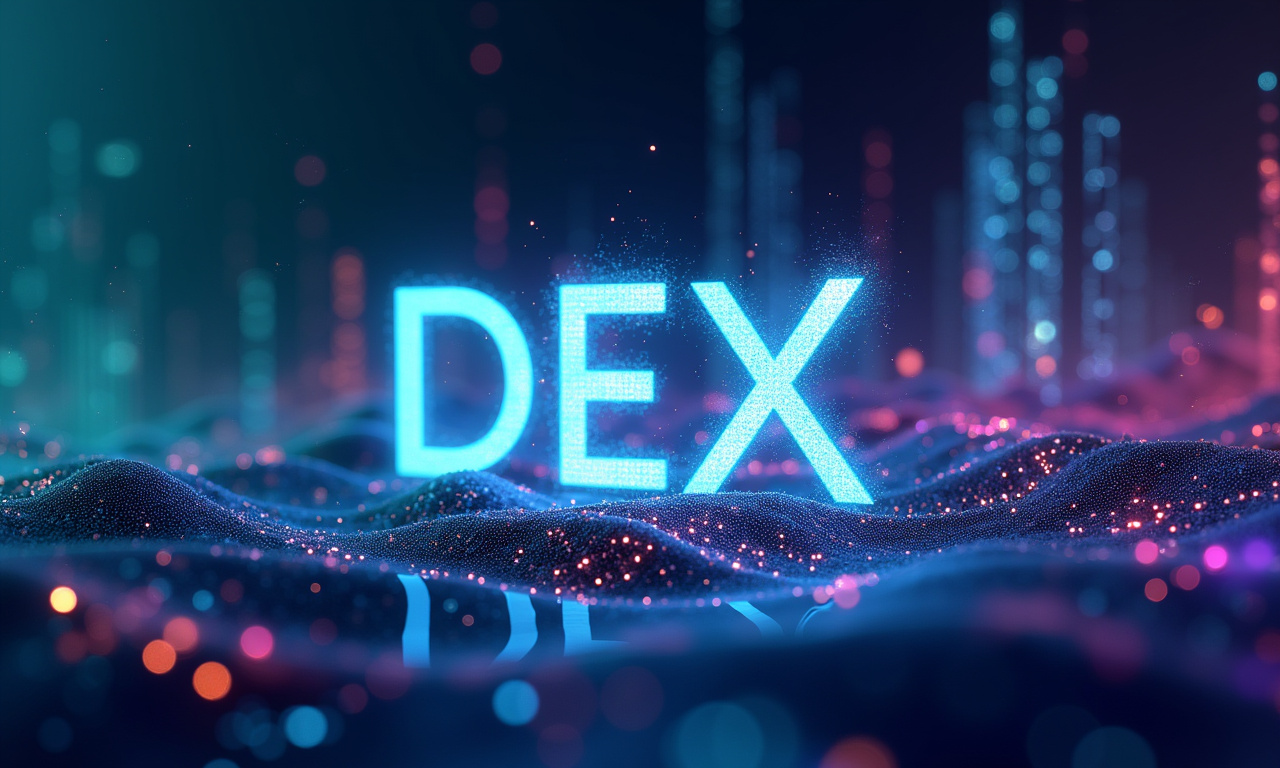Hyperliquid has emerged as a significant player in the decentralized exchange (DEX) landscape, aiming to combine the efficiency of centralized exchanges with the transparency and decentralization inherent in blockchain technology. This article delves into the core mechanisms of Hyperliquid's HYPE token and HLP liquidity model, analyzing their impact on the platform's performance and user experience. Let us now delve into the tokenomics, staking benefits, and governance of HYPE. In addition, we’ll explore the opportunities and challenges of entering the HLP vault.
Understanding Hyperliquid
Hyperliquid, a high-frequency trading, order book decentralized exchange (DEX), has been built to bring the performance of CEXes decentralized exchanges. Simultaneously, it maintains the transparency and decentralization principles that are at blockchain technology’s core. As of early 2025, Hyperliquid had taken in ≈70% of the volume in the decentralized perpetuals market. This accomplishment reflects its deep market penetration and high user adoption. This accomplishment is a testament to just how powerful the platform can be. It addresses the needs of more complex traders and liquidity providers in the DeFi (decentralized finance) space.
The platform’s native token HYPE was introduced in 2024 during one of the most impressive airdrops seen in crypto history. This move rewarded early users by distributing 31% of the entire token supply during this event. Their involvement, inspiration and creativity were essential to build out this nascent platform’s growth. In November 2024, that initial airdrop of 310 million $HYPE tokens was worth more than $1.2 billion. This was a great demonstration of not only the huge value and promise that the market saw in Hyperliquid, but in its ecosystem. This brilliant strategic decision spurred first mover advantage. It created a strong sense of community ownership and involvement in the platform’s development.
Hyperliquid is built on a proprietary order-matching infrastructure. Its mainnet implementation includes HyperEVM, a Layer 1 EVM-compatible Smart Contract Layer tightly integrated into Hyperliquid’s Layer 1 blockchain. HyperEVM mainnet release in February 2025. This enhanced feature set enables developers to deploy and execute new smart contracts, further expanding the capabilities and use-cases offered on Hyperliquid. This integration makes for greater interoperability with the larger Ethereum ecosystem, allowing for easy asset transfers and interactions with other DeFi protocols.
Main Characteristics of the Hyperliquid Chain
Hyperliquid’s high-performance consensus mechanism—called HyperBFT—is another important piece of its infrastructure. HyperBFT allows for block confirmation times of less than one second and can handle more than 200,000 transactions per second. This new platform is performing mind-blowingly well. It routes four times more trading activity than its next largest competitor, consistently passing users’ trades in under a second without lag or bottlenecking. HyperBFT gives Hyperliquid the speed and scalability required of an orderbook DEX. This natural advantage is essential to keeping it ahead in the speedy race that is decentralized finance.
The Sovereign Pools and Core Pools of the platform operate on ecosystem-agnostic, reusable modules. These modules calculate price logic, mitigate through fee calculation, oracle services, and liquidity control. This modular design provides incredible flexibility and adaptability. It gives the platform the flexibility to quickly adjust to evolving market demands and user preferences. Uniform standards modules further simplify creating and managing interstate trading pools. They reduce layout errors and increase the platform’s productivity.
Hyperliquid’s focus on a community-driven process and its self-funded, owner-operated iteration have allowed it to move quickly. The platform has focused on building a strong and engaged community, actively soliciting feedback and incorporating user suggestions into its development roadmap. This strategy has built a strong sense of ownership and loyalty amongst users, which is integral to the platform’s success. By early 2025, Hyperliquid's cumulative trading volume had approached $1 trillion, demonstrating the platform's significant impact on the DeFi market.
Notable Projects within the Hyperliquid Ecosystem
The Hyperliquid ecosystem consists of many other projects that add a lot to its DeFi and gaming ecosystem. Hyperbeat, Valantis and MON Protocol are the open source projects that rank among the top contributors. They improve the platform’s utility and add depth to the user experience. These projects are saving lives today by providing more access and variety of services and applications. They touch on topics such as data analytics, market insights, gaming and entertainment creating a wider appeal to the Hyperliquid ecosystem.
For instance, Valantis can offer data analytics and market intelligence tools that enable traders to take sound business decisions. Hyperbeat offers artists tools that allow them to develop, distribute and monetize digital assets such as NFTs. During this time, MON Protocol will continue to concentrate on bringing gaming and entertainment applications into the Hyperliquid ecosystem. These projects increase the value and usefulness of Hyperliquid. In doing so, they attract a rich mix of users and developers to the platform.
This combination of both of these projects is a testament to Hyperliquid’s vision to continuously encourage innovation and enhance its ecosystem. Hyperliquid is committed to continuous and open collaboration with external developers. This collaboration makes it possible for them to offer a wider variety of tools and usage contexts than they could develop on their own. This community-centric vision is a crucial ingredient to fueling Hyperliquid platform’s growth and wider adoption.
Potential Challenges and Risks
Whatever the case, Hyperliquid has won very big already. In that positive spirit, we need to acknowledge the challenges and risks the platform will face. Like all decentralized exchanges though, Hyperliquid carries regulatory risk, security risks, and market volatility. All of these aspects would play a major role in the platform’s performance as well as user experience.
Regulatory uncertainty is the other overarching concern for the whole DeFi industry. As governments around the world begin to grapple with the implications of decentralized finance, there is a risk that new regulations could restrict or prohibit certain activities on platforms like Hyperliquid. That steps could constrain the platform’s ability to do business in some jurisdictions or force it to impose expensive compliance costs.
Security vulnerabilities are another significant risk. Decentralized exchanges have been particularly vulnerable to these types of attacks as hackers attempt to find flaws in their code or infrastructure. A successful attack like this one would not only lead to the loss of user funds, but would be devastating to the platform’s reputation. Hyperliquid needs to pay extremely close attention to security and preemptively protect itself from the threats outlined above, as well as others.
Market volatility is one of the biggest risks in the cryptocurrency markets. Values of digital assets can fluctuate wildly overnight. Extreme price movement can create major difficulties and cascading losses among market participants including traders and liquidity providers. Hyperliquid must provide its users with tools and resources to manage these risks, such as risk management tools and educational materials.
Future Prospects and Developments
While these hurdles are serious, Hyperliquid is set up for long-term explosive growth and maturation. The platform's scalable architecture, expanding ecosystem, and focus on community engagement position it well for continued success in the DeFi market. As the DeFi industry matures, Hyperliquid will grow with stronger adoption and incoming institutional interest.
The platform's innovative features, such as its lending infrastructure and stablecoin governance model, make it a compelling platform for developers and users. These features provide exciting new avenues for earning yield and engaging in on-chain governance of the platform. As additional developers create on Hyperliquid, the platform’s ecosystem will only expand and diversify.
Hyperliquid’s emphasis on distributing grants to their community and regularly distributing their tokens has cultivated a passionate user base. These campaigns incentivize users to contribute based on value created, granting them ownership of the project while increasing loyalty and stickiness. As the ever-evolving platform expands even further, there’s no doubt they’ll keep looking to curl up community collaboration and constructive criticism.
Hyperliquid’s multichain integration with networks like Ethereum and Solana allows for quick and easy asset transfers between your wallets on different networks. Interoperability remains key to attracting users across different blockchain ecosystems. It further provides a path for ensuring concentrated capital flows onto the Hyperliquid platform. With hundreds of blockchain networks forecasted to exist in the future, as Hyperliquid grows it will almost certainly need to broaden its integrations and partnerships.
Final Thoughts
With its innovative vote-escrow tokenomics and high-yield opportunities, Hyperliquid is an obvious leader in the DeFi space, looking to climb high on traders’ radars. The platform's success is a testament to its innovative technology, community-centric approach, and commitment to providing a superior trading experience. We know the DeFi industry is changing quickly. Hyperliquid is to be at the forefront of innovation and adoption. Hyperliquid is to create a paradigm shift toward decentralized finance.
What makes the platform truly unique is how it combines the speed and efficiency of centralized exchanges. It equally provides the transparency and decentralization of blockchain technology. This winning product suite attracts all users, from seasoned traders to those new to the DeFi ecosystem. The platform is still expanding and changing quickly. As users continue growing at a rapid pace, they will attract even more developers to their ecosystem.
The HYPE token incentivizes participation and rewards users for their contributions to the platform, while the HLP liquidity model ensures that there is sufficient liquidity to support trading activity. Together, these mechanisms ensure a rich and diverse ecosystem that benefits all involved.
Recent Updates and Insights
As of this writing on June 28th, 2025, Hyperliquid’s token, HYPE, has achieved an all-time high price of $36.12—247X in value. This was just the start—it increased by over 1,000% in less than seven months! It’s a display of the undeniable demand for the token and the immense confidence investors have in the platform’s future. HYPE’s price appreciation has not only rewarded early adopters, but it has incentivized more people to participate in Hyperliquid’s thriving ecosystem.
Hyperliquid’s potential for growth is immense, given its highly scalable architecture and rapidly evolving ecosystem. The DeFi industry is changing fast. Hyperliquid is at the forefront of this innovation and will accelerate the adoption of decentralized finance. The platform's commitment to community engagement, innovative features, and interoperability make it a compelling platform for developers and users alike. Given its novel market-making approach and developing ecosystem, Hyperliquid seems set to get ever-more-hyper as it climbs its way up the decentralized exchange leaderboard.
- High Performance: Hyperliquid's HyperBFT consensus mechanism enables fast block confirmation times and high transaction throughput, ensuring a smooth and efficient trading experience.
- Community-Centric Approach: Hyperliquid actively engages with its community, soliciting feedback and incorporating user suggestions into its development roadmap.
- Expanding Ecosystem: Hyperliquid's ecosystem includes various projects that enhance its DeFi and gaming capabilities, broadening the appeal of the platform.
- Innovative Features: Hyperliquid's lending infrastructure and stablecoin governance model offer new opportunities for generating yield and participating in the governance of the platform.
- Interoperability: Hyperliquid's integration with various blockchain networks enables seamless asset transfers and attracts users from different blockchain ecosystems.
Potential risks associated with participating in the HLP vault:
- Regulatory Uncertainty: New regulations could restrict or prohibit certain activities on platforms like Hyperliquid.
- Security Vulnerabilities: Decentralized exchanges are often targeted by hackers who seek to exploit weaknesses in their code or infrastructure.
- Market Volatility: The value of digital assets can fluctuate dramatically, and sudden price swings can lead to losses for traders and liquidity providers.
Hyperliquid's potential for growth is significant, with its scalable architecture and expanding ecosystem. As the DeFi industry continues to evolve, Hyperliquid is well-positioned to remain at the forefront of innovation and drive the adoption of decentralized finance. The platform's commitment to community engagement, innovative features, and interoperability make it a compelling platform for developers and users alike. With its unique approach and growing ecosystem, Hyperliquid is poised to continue its ascent in the decentralized exchange landscape.




